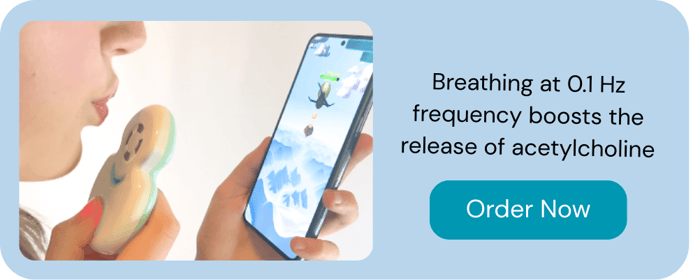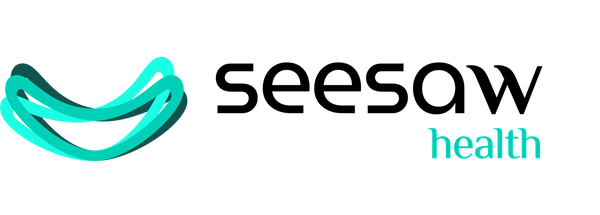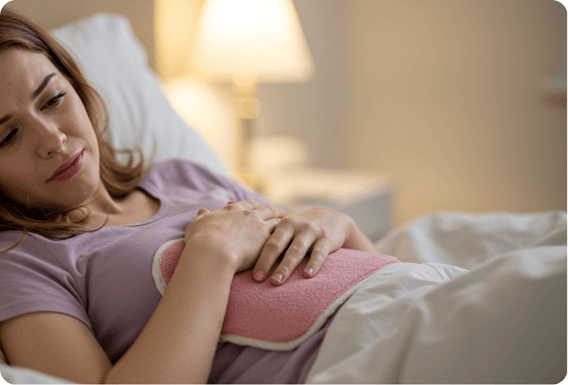Table of Contents
Understanding the relationship between hormonal changes and inflammation is crucial for managing conditions like autoimmune diseases, metabolic disorders, and chronic pain, which are often exacerbated by these fluctuations. In this article, we’ll discuss why and how different phases of your cycle or the fluctuations of hormones influence inflammation level and what you can do to mitigate its effects.
The Phases of the Menstrual Cycle
- Menstrual Phase (Days 1-5): This is when menstruation occurs. Hormone levels are at their lowest.
- Follicular Phase (Days 1-13): Overlaps with the menstrual phase initially but continues until ovulation. Estrogen levels start to rise.
- Ovulation (Day 14): A surge in luteinizing hormone (LH) triggers the release of an egg from the ovary.
- Luteal Phase (Days 15-28): Progesterone rises to prepare for potential pregnancy; if it doesn’t occur, hormone levels fall, leading to menstruation.
Hormonal Fluctuations during the Menstrual Cycle
Menstrual Phase: Low Hormones, High Inflammation
Follicular Phase: Rising Estrogen Levels, Less Inflammation
Ovulation: The Mid-Cycle Surge, High Inflammation
The significant decrease in anti-inflammatory vagal activity from the follicular to luteal phase can be mitigated with 0.1 Hz breathing, therefore better regulating the anti-inflammatory response and getting the body ready for the menstruation, a pro-inflammatory event occurring within days and that require optimal vagal activity.
Luteal Phase: Progesterone Takes Charge, Imbalance
Hormonal Fluctuations Beyond the Menstrual Cycle and Their Impact
Pregnancy and Postpartum Period
Menopause and Aging
Hormonal Contraceptives
Chronic Inflammation and Hormonal Imbalances
Practical Tips for Managing Fluctuations
- Dietary Adjustments: Incorporate anti-inflammatory foods like fatty fish rich in omega-3s, leafy greens high in antioxidants, and spices such as turmeric during surge phases.
- Hydration: Drink plenty of water throughout your cycle but especially during menstruation when it is a peak.
- Exercise: Regular physical activity can help modulate inflammatory responses but opt for gentler exercises like yoga or swimming during more painful days.
- Supplements: Consider supplements like magnesium or omega-3 fatty acids after consulting with a healthcare provider.
- Stress Management: Chronic stress exacerbates inflammation; practices such as deep, 0.1 Hz breathing exercises are beneficial and should be part of your routine.

Remember
Ready to experience the benefits of breathwork to tame inflammation? Discover
Disclaimer: This blog post is intended for informational purposes only and should not be considered medical advice. Always consult with a qualified healthcare professional for any health concerns or before making any decisions related to your health or treatment.
References
Delgado-García, J. M., & Gismera-Benítez, I. (2020). Vagal Activity in the Menstrual Cycle: A Systematic Review. International Journal of Molecular Sciences , 21(23), 9123.
Schmalenberger, K. M., et al. (2019). A Systematic Review and Meta-Analysis of Within-Person Changes in Cardiac Vagal Activity across the Menstrual Cycle: Implications for Female Health and Future Studies. Psychoneuroendocrinology , 109, 104405.
lough, J. D., et al. (2023). Systemic Inflammation and Menstrual Cycle Length in a Prospective Cohort Study. Journal of Women's Health, 32(2), 214-221.
Pilgrim, A., et al. (2017). High-sensitivity C-reactive protein across the menstrual cycle in healthy women. Fertility and Sterility, 107 (4), 982-988.
Gold, E. B., et al. (2016). The Association of Inflammation with Premenstrual Symptoms. Journal of Women's Health, 25(8), 817-824.
FAQs
How do hormones influence inflammation throughout the menstrual cycle?
Hormones like estrogen and progesterone fluctuate during the menstrual cycle, influencing immune system activity. High estrogen can have anti-inflammatory effects, while drops in estrogen or progesterone may trigger low-grade inflammation, making women more sensitive to pain, mood changes, and stress during certain phases of their cycle.
Why are some women more prone to inflammation during their cycle?
Women with conditions like endometriosis, PCOS, or autoimmune disorders may experience heightened inflammatory responses during hormone fluctuations. Stress, poor sleep, and diet can further amplify inflammation, creating a cycle of pain, fatigue, and nervous system dysregulation.
How does the nervous system interact with hormonal inflammation?
The autonomic nervous system regulates both stress response and immune activity. When the sympathetic nervous system is overactive, inflammatory signals are amplified. Activating the parasympathetic nervous system through techniques like breathwork or relaxation helps modulate inflammation and improve cycle-related symptoms.
Can lifestyle habits help reduce hormone-related inflammation?
Yes. Anti-inflammatory nutrition, regular movement, stress management practices (like breathwork and mindfulness), and adequate sleep can help stabilize nervous system responses and hormone balance, reducing the intensity of cycle-related inflammation.




